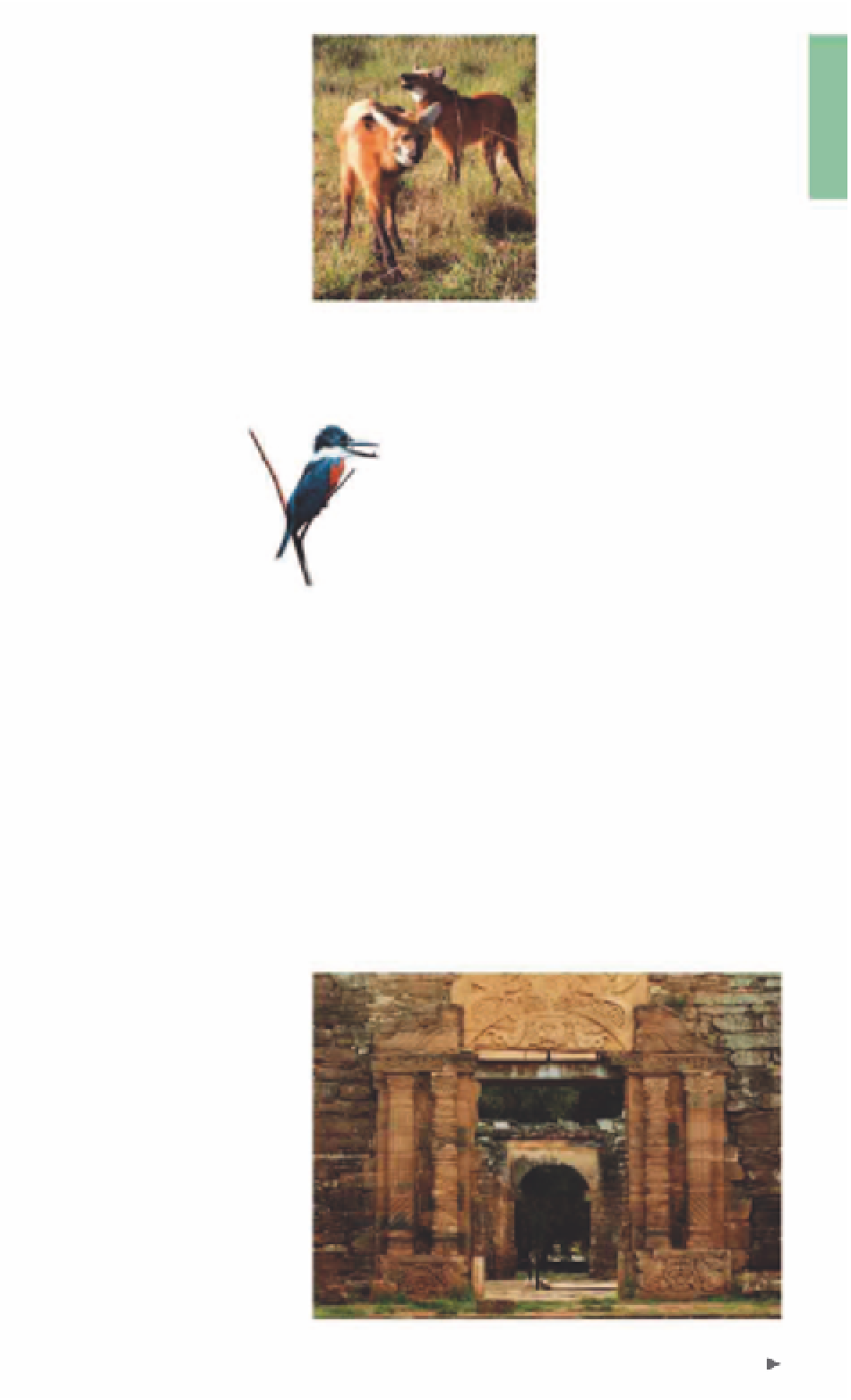Travel Reference
In-Depth Information
park's reception area. The 3-mile
(5-km) trek to the
Carpincho
and
Yacaré
lagoons provides
excellent bird-watching
opportunities. A single road,
often impassable during the
wet season (November-March),
provides vehicle access through
to the
quebracho
forests.
The entrance of the site, the
Centro de Interpretación
, has
themed rooms which depict
the story of the mission from its
founding to its eventual
decline following the Jesuits'
expulsion from the New World
in 1767 by the Spanish colonial
authorities. It also has a few
exhibits that touch on Guaraní
life. A short grassy path leads to
the ruins among which lies a
large and still clearly
recognizable central plaza.
Dominating the plaza is the
mission's imposing red-
sandstone church designed by
Italian architect Juan Brasanelli
in a sophisticated style known
as Guaraní Baroque. Its lavishly
gilded interior no longer exists
and the roof has long since
crumbled away, but its magni-
ficent portal, adorned with bas-
reliefs sculpted by skilled
Guaraní artists, stands as a
testament to the building's
original splendor. In a second
square adjacent to the church
are the Jesuit priests' quarters,
together with the remains of a
cemetery, libraries, dining
rooms, and a kitchen.
The ancient ruins occupy
nearly six blocks of the village
of San Ignacio, which has a
wide range of accommodation
and restaurant options. There
are also sound and light
shows that recount the area's
rich history.
t
Parque Nacional
Río Pilcomayo
Road
map
C1. 224 miles (360 km) N
of Resistencia.
@
Resistencia to
Laguna Blanca via Formosa.
n
Ave
Pueyrredón & RN86, Laguna Blanca;
(03718) 470-045.
Open
daily.
∑
parquesnacionales.
gob.ar
Elusive maned wolf found in the Parque
Nacional Río Pilcomayo
Taxis and
remises
(licensed
mini-cabs) run regularly from
Formosa to the park
entrance. The towns
of Laguna Naick-
Neck and Laguna Blanca
sit near its southern limit.
The latter is linked to Formosa
by bus and has better tourist
facilities. The small town is
also the location for
the park's administra-
tive headquarters.
Bounded to its north by
Río Pilcomayo, Argentina's
river border with Paraguay,
this 185-sq-mile (490-sq-
km) park shares much of
the flora and fauna
found in Parque
Nacional Chaco.
However, it contains
more, and larger, bodies of
water. The park's main
highlights are the beautiful
Laguna Blanca
and the
Esteros Poi
, both of which
are reachable by foot and
vehicle trails.
The park's biggest lake,
Laguna Blanca, is edged by
forests alive with noisy howler
monkeys, toco toucans, and
pretty ringed kingfishers. The
park has a myriad of other
animals, including elusive
mammals such as the maned
wolf, which is also the park's
symbol, and the graceful ocelot.
The lake is a popular bathing
spot, despite the presence at its
shoreline of broad-nosed
caiman and capybara, neither
of which bite. It is advisable,
however, to swim with shoes
on. Visitors are also advised not
to feed the fish. To the west of
the lake, the Esteros Poi marsh-
land is inhabited by wading
birds such as herons, jabiru
storks, and jacanas.
Apart from Resistencia, the
nearest major town to Parque
Nacional Río Pilcomayo is
Formosa, 112 miles (180 km)
north in the Formosa province.
Ringed kingfisher at
Laguna Blanca
y
San Ignacio Miní
Road
map
D1. 230 miles (370 km) E of
Corrientes.
*
6,200.
@
from
Corrientes.
n
Ave Sarmiento, access
from San Ignacio, (03764) 349-833.
∑
misiones-sanignacio.com.ar
A UNESCO World Heritage Site,
the Jesuit ruins at San Ignacio
Miní are the most stunning and
extensive of the six ruins that
remain from the Jesuit-Guaraní
missions founded in the region
in the 17th century.
E
Centro de Interpretación
Alberdi s/n.
Te l
(03752) 470-186.
Open
7am-7pm daily.
&
The Jesuit ruins of San Ignacio Miní, founded in the 17th century
A panoramic view of the magniicent horseshoe-shaped Iguazú Falls




































